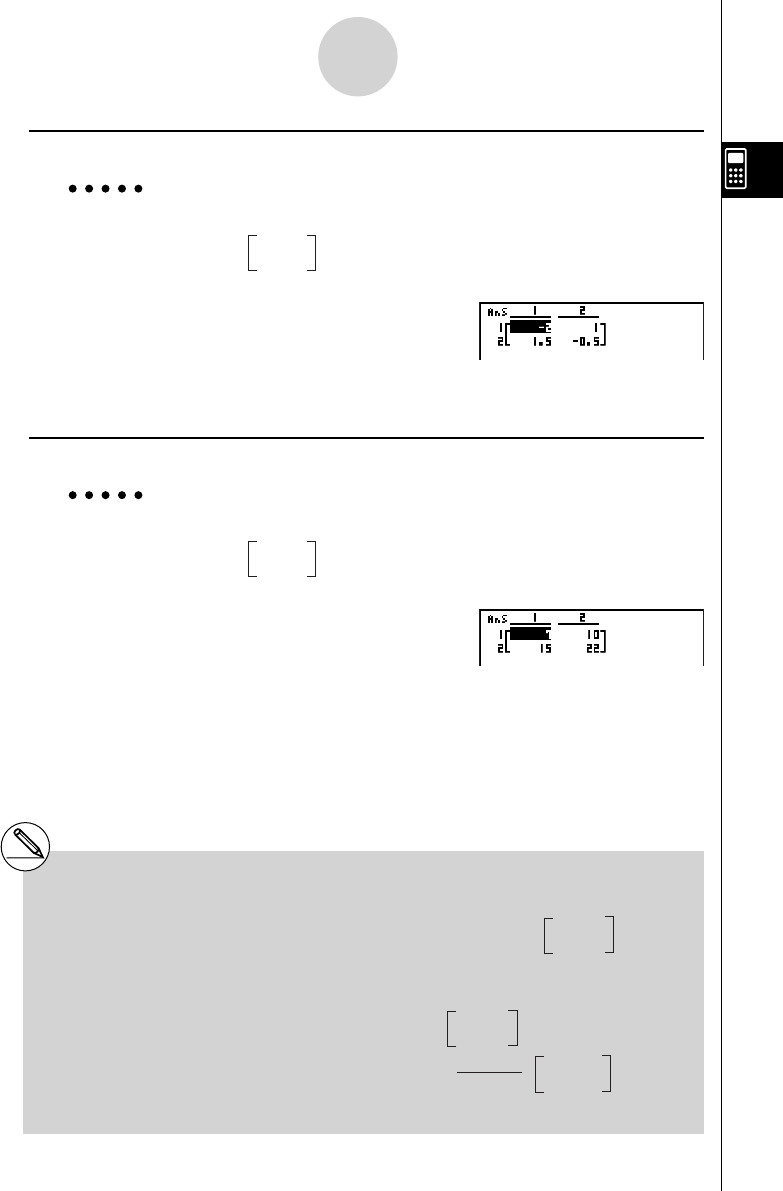User's Manual
Table Of Contents
- Quick-Start
- Precautions when Using this Product
- Contents
- Getting Acquainted— Read This First!
- Chapter 1 Basic Operation
- Chapter 2 Manual Calculations
- Chapter 3 List Function
- Chapter 4 Equation Calculations
- Chapter 5 Graphing
- 5-1 Sample Graphs
- 5-2 Controlling What Appears on a Graph Screen
- 5-3 Drawing a Graph
- 5-4 Storing a Graph in Picture Memory
- 5-5 Drawing Two Graphs on the Same Screen
- 5-6 Manual Graphing
- 5-7 Using Tables
- 5-8 Dynamic Graphing
- 5-9 Graphing a Recursion Formula
- 5-10 Changing the Appearance of a Graph
- 5-11 Function Analysis
- Chapter 6 Statistical Graphs and Calculations
- Chapter 7 Financial Calculation (TVM)
- Chapter 8 Programming
- Chapter 9 Spreadsheet
- Chapter 10 eActivity
- Chapter 11 System Settings Menu
- Chapter 12 Data Communications
- Appendix

20070201
u Matrix Inversion [OPTN] - [MAT] - [ x
–1
]
Example To invert the following matrix :
Matrix A =
1 2
3 4
K 2 (MAT)1 (Mat)
av (A)! ) (
x
–1
)w
u Squaring a Matrix [OPTN] - [MAT] - [ x
2
]
Example To square the following matrix :
Matrix A =
1 2
3 4
K 2 (MAT)1 (Mat)av (A)xw
2-8-19
Matrix Calculations
# Only square matrices (same number of rows
and columns) can be inverted. Trying to invert
a matrix that is not square produces an error.
# A matrix with a determinant of zero cannot
be inverted. Trying to invert a matrix with
determinant of zero produces an error.
# Calculation precision is affected for matrices
whose determinant is near zero.
# A matrix being inverted must satisfy the
conditions shown below.
The following shows the formula used to
invert Matrix A into inverse matrix A
–1
.
Note that ad – bc
≠
0.
A A
–1
= A
–1
A = E =
1 0
0 1
A =
a b
c d
A
–1
=
1
ad – bc
d–b
–c a










